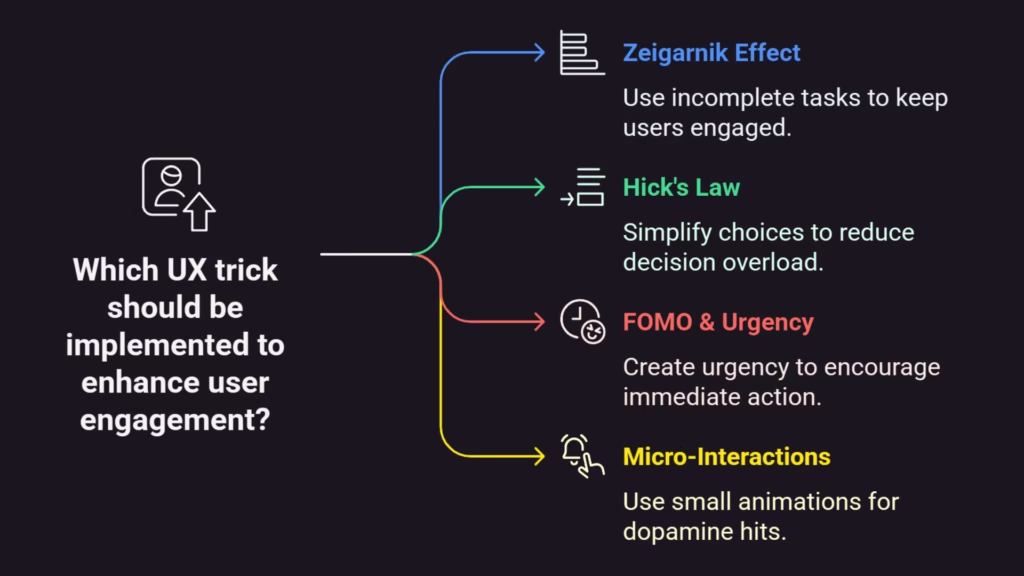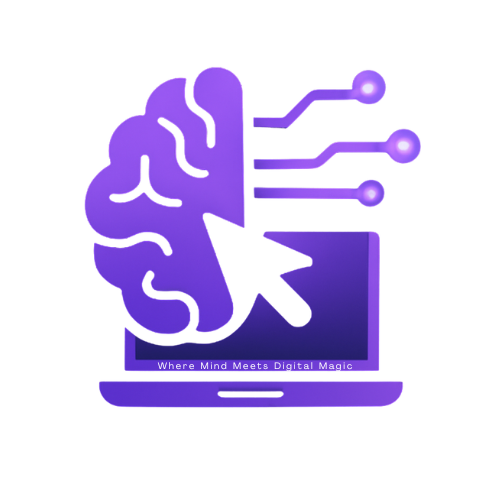Ever Felt Drawn to a Website Without Knowing Why?
You know that feeling—when a website just clicks with you. It’s smooth, it flows, and somehow… it makes you want to keep exploring, clicking, even buying. That, isn’t magic. It’s UX psychology at work.
In this article, we’re spilling the digital tea on how websites secretly use psychology to guide your every move—and how you can do the same to level up your designs. Whether you’re designing your own brand site or just obsessed with understanding the brain behind the screen, this one’s for you.
What Is UX Psychology, Really?
UX psychology, short for User Experience psychology, is the beautiful blend of psychology + design. It’s all about using psychological principles to create digital experiences that feel intuitive, comfortable, and oh-so-clickable.
Think of it like this: good UX = making things easy and delightful. UX psychology = understanding why they feel easy and delightful.
It taps into human behavior, attention, decision-making, emotions, and even memory. When designers understand this, they can build sites and apps that feel like they were made just for you. Because, in a way… they kind of were.
Why User Experience Is Important in 2025 (More Than Ever)
Let’s keep it real: people don’t stay on confusing websites.
In 2025, attention spans are shorter than ever, competition is everywhere, and first impressions? They’re digital. Your user experience isn’t just part of your site—it is your site.
Here’s why UX matters:
- Keeps visitors on your site longer (aka lower bounce rate)
- Builds trust instantly
- Boosts conversions without needing more traffic
- Improves SEO (Google loves sites that users love)
Whether it’s an e-commerce store or a blog, a smooth user journey = happier visitors and better results. Period.
UX Psychology Tricks That Keep People Hooked
Let’s peek behind the curtain. Here are four science-backed user experience tricks that brands use all the time—some without you even realizing.
✨ 1. The Zeigarnik Effect
Ever left something unfinished and felt itchy inside? That’s the Zeigarnik Effect: the brain remembers incomplete tasks better than completed ones.
UX example: Progress bars, sign-up steps, or “Only 2 steps left!” messages. These keep you engaged because your brain wants to finish.
✨ 2. Hick’s Law
Too many choices = decision overload.
UX example: Clean navigation bars, limited product filters, or one CTA per screen. When things are simple, people act faster.
✨ 3. FOMO & Urgency
We’re wired to act fast when we think we’re missing out.
UX example: Countdown timers, “Only 3 left!” messages, or “Join 1200+ subscribers” badges. It adds just enough pressure to click now, not later.
✨ 4. Micro-Interactions & Dopamine Hits
That little click animation? The way a button lights up? It matters.
UX example: Small, satisfying animations and sound cues reward your actions with mini dopamine bursts, making digital experiences addictive (in a good way).

Emotional Design: More Than Just Pretty Fonts
Design isn’t just about how things look—it’s about how they feel.
Emotional design connects with the user’s subconscious. For example:
- Color psychology can influence trust (blues), excitement (reds), or calm (greens).
- Typography can feel friendly or formal based on spacing and shape.
- Layout clarity impacts stress—chaos = bounce.
So yes, your site’s vibe is speaking louder than your words sometimes.
UX Psychology in Social Media & Apps (The Sneaky Bits)
Have you ever gotten trapped in an endless scroll… and then realized an hour passed? That’s not accidental. Social media platforms are UX psychology powerhouses.
Here’s how they use it:
- Infinite scrolling: No stopping point = no natural break.
- Variable rewards: Sometimes likes, sometimes comments, sometimes nothing. It’s a psychological slot machine.
- Notification badges: Designed in red (for urgency) and placed to draw immediate attention.
These platforms study our behavior—and design their UX to make sure we stay.
How to Apply UX Psychology to Your Own Website
Okay, now that we know the secrets… how do you use them? Here’s how to sprinkle some psychology magic onto your digital spaces:
- ✅ Use progress bars on sign-up forms or course modules.
- ✅ Keep your menu simple with 4–5 top-level options max.
- ✅ Add social proof (testimonials, subscriber count).
- ✅ Choose colors intentionally based on emotion.
- ✅ Include micro-interactions for delight! (Button hovers, subtle animations)
- ✅ Optimize your mobile layout—it’s not optional in 2025.
And most importantly? Always design for humans. UX psychology isn’t about tricking people. It’s about understanding them and meeting them where they are.
Wrapping Up: UX Isn’t Just Design—It’s Digital Mind Reading
UX psychology is all around us. From how we click to why we stay, our experiences online are deeply shaped by the science of behavior. The better we understand it, the more powerful—and ethical—our designs can be.
So next time you find yourself obsessing over a website’s vibe, remember: it’s not a coincidence. It’s psychology in pixels.
Want to dive deeper into one of the tricks we mentioned?
Check out our article: Psychology of Color in Marketing: Build Trust, Boost Clicks, and Stand Out for a closer look at how color psychology can boost clicks, conversions, and curiosity.
Frequently Asked Questions
When it comes to social media, UX means using UX psychology to make apps like Instagram and TikTok feel simple, fun, and addicting. The whole point is to make your experience easy and fun.
In UX, the most important thing is to build with UX psychology in mind. This means putting users first and making sure the design works with how people really think and act.
Based on UX psychology, the 5 W questions help designers figure out who the users are, what they want, when and where they use the product, and why they do it. This makes the experience feel normal and works well.
A big part of UX psychology is the study of why people scroll endlessly. It uses the fact that our brains love surprises and benefits to keep us reading for hours without realising it.
Because we don’t want to miss out and want to see new things, infinite scrolling plays on our UX psychology and makes us keep reading.
